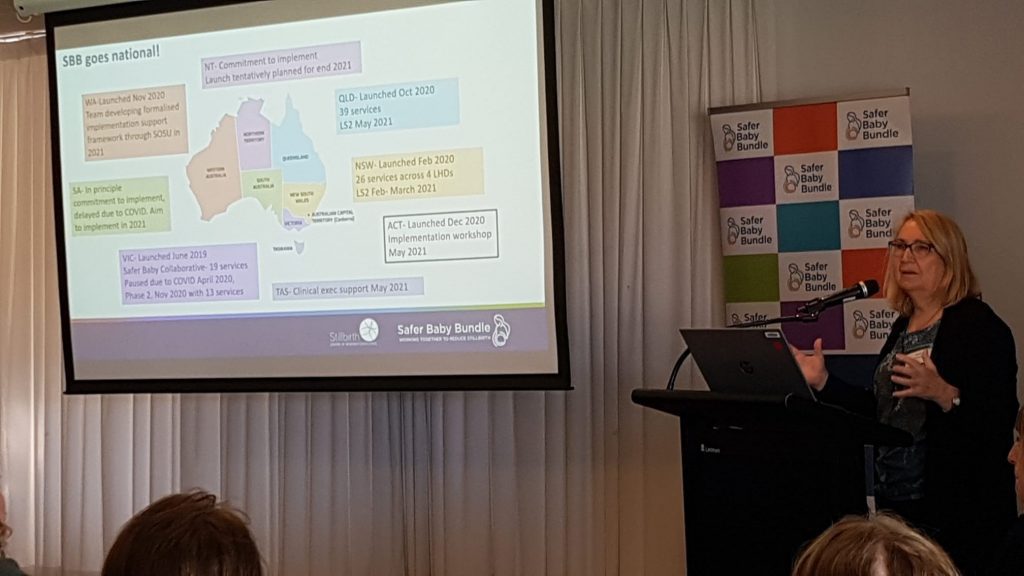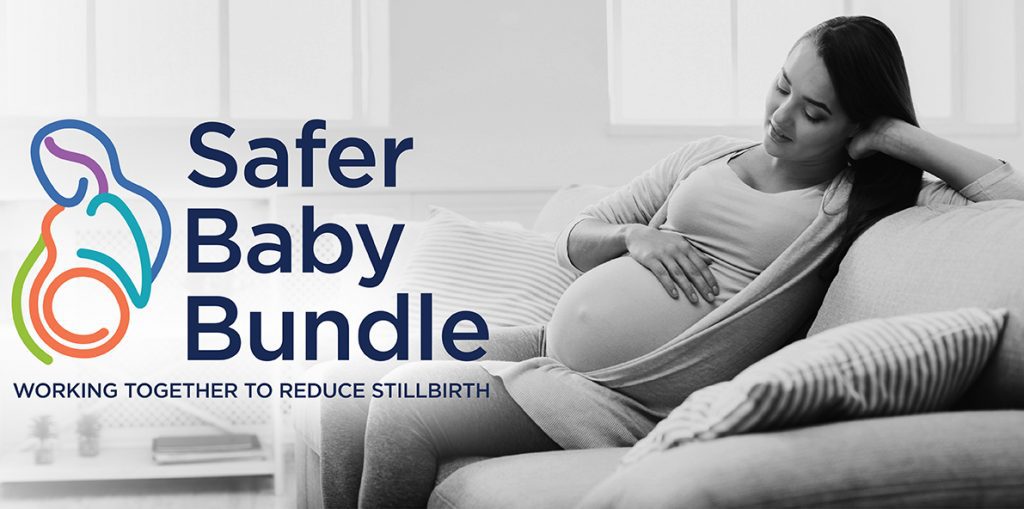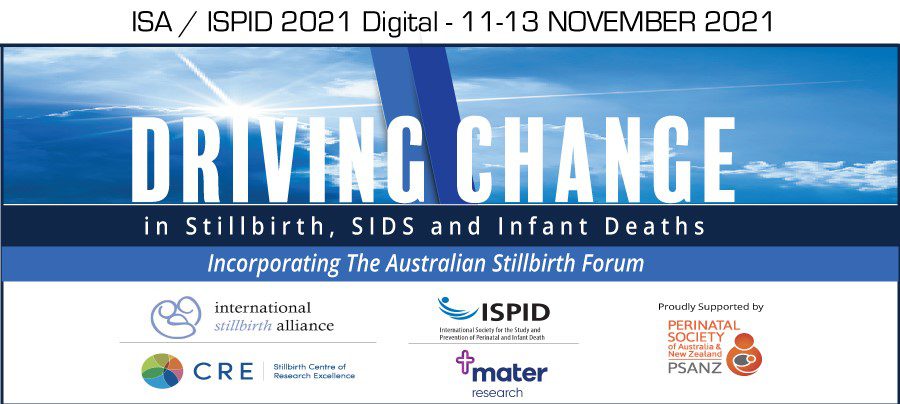About Us
Researchers + Clinicians
Parents

Living with Loss Research Trial Launches at the End of June
The Stillbirth CRE is launching a new research study at the end of the month to evaluate the effectiveness of an online bereavement support program, ‘Living with Loss’. The program incorporates evidence-based coping strategies commonly used by healthcare professionals to help parents navigate grief in the short and long-term. The online program was co-designed by parents and healthcare professionals, covering a broad range of topics they have told us are important. The Living with Loss research team is inviting parents who have experienced stillbirth or the death of their newborn baby in the past two years to participate in the evaluation of the program. Find out more at http://livingwithloss.com.au
COCOON Continues Global Reach
The COCOON study continues to measure the impact of COVID-19 on parents who are pregnant, recently given birth, or who have experienced stillbirth or the death of their newborn. More than 12,000 respondents have completed the COCOON online surveys. A follow-up qualitative study is planned for the Australian surveys, focusing on bereaved parents who experienced stillbirth or neonatal death during the pandemic. Two new country surveys were finalised in May in the Netherlands and Canada, and a collaboration with a university in the Philippines is also underway. Find out more about COCOON or share the survey with your network.
iCHOOSE International Study Calls for Participants
Researchers from the University of Bristol are inviting bereaved parents in Australia to contribute to a new research study to help develop a questionnaire to prioritise outcomes for research and care after stillbirth. The iCHOOSE survey focuses on outcomes that are important to parents, healthcare professionals and researchers, and will be used to develop a set of outcomes for researchers to use to improve care for families who experience stillbirth. For more information, contact Dr Danya Bakhbakhi at ichoose-research@bristol.ac.uk.
The Aboriginal Families and Baby Bundles Investigates the Link Between Omega 3 and Pre-term Birth
The Aboriginal Families and Baby Bundles research team at Adelaide Women and Children’s Hospital are seeking participants from Aboriginal antenatal and birthing programs for a new study investigating the link between omega 3 and pre-term birth. Contact karen.glover@sahmri.com for more information or to register.
Still Six Lives Public Awareness Campaign: Phase 2
Earlier this year, Red Nose Australia launched the Still Six Lives public awareness campaign to increase awareness about stillbirth in the community. The Stillbirth CRE is partnering in this campaign, alongside Sands and Stillbirth Foundation Australia. The next phase of this campaign focuses on three stillbirth prevention messages based on elements of the Safer Baby Bundle – smoking cessation, monitoring fetal movements, and maternal side sleeping. You may see messages related to these topics on digital and television advertising, social media, and other channels, or find that more pregnant women want to learn more about stillbirth and prevention during this time. Maternity healthcare providers can prepare by updating their knowledge on stillbirth prevention by completing the free Safer Baby Bundle eLearning modules at http://learn.stillbirthcre.org.au.

Safer Baby Bundle Queensland Health Forum: A Huge Success!
Members of the Stillbirth CRE were thrilled to participate in the recent Clinical Excellence Queensland Safer Baby Bundle Implementation Forum. Stillbirth CRE team members including Director Vicki Flenady, Safer Baby Bundle lead Christine Andrews, and Diana Jans from the Indigenous Advisory Group, presented on the future of the Safer Baby Bundle, including the need for adaptations for Aboriginal and Torres Strait Islander communities. Thank you to everyone involved!


National Safer Baby Bundle Virtual Forum, 17-18 June
The first ever National Safer Baby Bundle Virtual Forum will run over two half days on 17 and 18 June. Bringing together maternity health professionals, researchers and advocates, the forum is an opportunity for jurisdictions to share implementation best practices, workshop challenges, and nurture national collaboration. Find out more or register for the forum here.

Call for Abstracts: ISA-ISPID Virtual Conference and National Stillbirth Forum, 11-13 November
Registration is now open for the 2021 ISA-ISPID Virtual Conference, incorporating the Australian Stillbirth Forum for the first time! The 2021 Australian Stillbirth Forum will be held as an in-person event at the Brisbane Convention Centre on 11 November, bringing together parents, policy makers, clinicians, and researchers to review progress of the National Stillbirth Action and Implementation Plan. The ISA-ISPID conference will be held as a virtual event with the theme Driving Change, addressing global issues of stillbirth, neonatal death, SIDS and Sudden Unexpected Death in Infancy (SUDI), showcasing strategies to effectively address these issues across high, middle and low-income countries. Register and submit abstracts now at www.isa-ispid2021.com.

Safer Baby Bundle eLearning Valuable for Maternity Healthcare Providers: Study
Over 95% of participants completing the Safer Baby Bundle eLearning agreed it was helpful, relevant, and easy to use, according to a recent evaluation published in the Australian and New Zealand Journal of Obstetrics and Gynaecology. Read the evaluation online at ANZJOG.
Environmental Research Journal: Ambient Temperature and Stillbirth
A new study recently published in Environmental Research Journal indicates there may be a link between ambient temperature and safer pregnancies. Led by PhD candidate Jessica Sexton at the Stillbirth CRE, the paper titled “Systematic review of ambient temperature exposure during pregnancy and stillbirth: Methods and evidence,” reviewed 12 eligible articles among 538 records that analysed associations between ambient temperature exposure and stillbirth for 42,848 stillbirths among 3.4 million births across seven countries. The review found that exposure to hot and cold temperatures during pregnancy may increase the risk of stillbirth, with the highest risk in temperatures above 29.4°C, although a clear causative mechanism remains unknown.
Study: Development of a Core Outcome Set for Interventions to Prevent Stillbirth
The development of a core outcome set for interventions to prevent stillbirth could be used to contribute towards coordinated outcome reporting and help guide clinical practice, according to a new paper published in the Australian and New Zealand Journal of Obstetrics and Gynaecology. Authors on the paper included Stillbirth CRE director Professor Vicki Flenady and Stillbirth CRE principal investigator Associate Professor Philippa Middleton. Access the full paper to learn more.
Harnessing the Power of Social Media: Evaluating the “Movements Matter” Campaign
A study recently published in the Australian and New Zealand Journal of Obstetrics and Gynaecology has shown how a public awareness campaign using social media and in-hospital education materials has led to increases in knowledge about fetal movements among pregnant women. “Evaluation of Movements Matter: A social media and hospital‐based campaign aimed at raising awareness of decreased fetal movements” evaluated the success of the Movements Matter education campaign, led by Lilian Chan, a collaborator with the Stillbirth CRE.
Induction of Labour for Non-Medical Reasons Associated with Higher Birth Interventions
A new study looking at intrapartum interventions and outcomes for women and children following induction of labour (IOL) at term in uncomplicated pregnancies has found IOL for non-medical reasons is associated with higher birth interventions, particularly in primiparous women, and more adverse maternal, neonatal and child outcomes for most variables assessed. The 16-year population-based linked data study, led by Professor Hannah Dahlen of Western Sydney University, found the size of effect varied by parity and gestational age, making these important considerations when informing women about the risks and benefits of IOL. Read more.
ANZJOG Study: Better Investigation of Stillbirths Needed
A new study, led by PhD student Jess Sexton, recently published in the Australian and New Zealand Journal of Obstetrics and Gynaecology, has found that most stillbirths are not investigated according to best practice recommendations , with many stillbirths remaining unexplained. The paper, titled “Prospective cohort study: Causes of stillbirth in Australia 2013–2018” highlights the need for education on the value of stillbirth investigations.
Women and Birth Paper: Perceptions and Practice of Sleep Position in Late Pregnancy
A new paper published in Women and Birth Journal, led by the Stillbirth CRE’s Kara Warrilow, highlights the importance of communicating clear stillbirth prevention messages, with pregnant women more likely to go to sleep on their side if they receive advice to do so. The study, titled “Australian women’s perceptions and practice of sleep position in late pregnancy: An online survey” found that the majority of Australian women understand the importance of going-to-sleep position in late pregnancy, although inconsistencies in information provided to women remain and it is unknown whether stillbirth prevention messages are reaching high-risk populations.
ANZJOG Study: Making Every Birth Count
A new paper analysing perinatal deaths in Queensland, published in the Australian and New Zealand Journal of Obstetrics and Gynaecology, has found that a high proportion of late gestation perinatal deaths are associated with contributing factors relating to care. The study, titled Making every birth count: Outcomes of a perinatal mortality audit program was led by Stillbirth CRE director Professor Vicki Flenady. The paper recommends improving antenatal care for women with risk factors for stillbirth and improving perinatal mortality audit as a valuable step in stillbirth prevention.

Level 3, Aubigny Place
Mater Research Institute
Raymond Terrace,
South Brisbane QLD 4101
The University of Queensland Faculty of Medicine